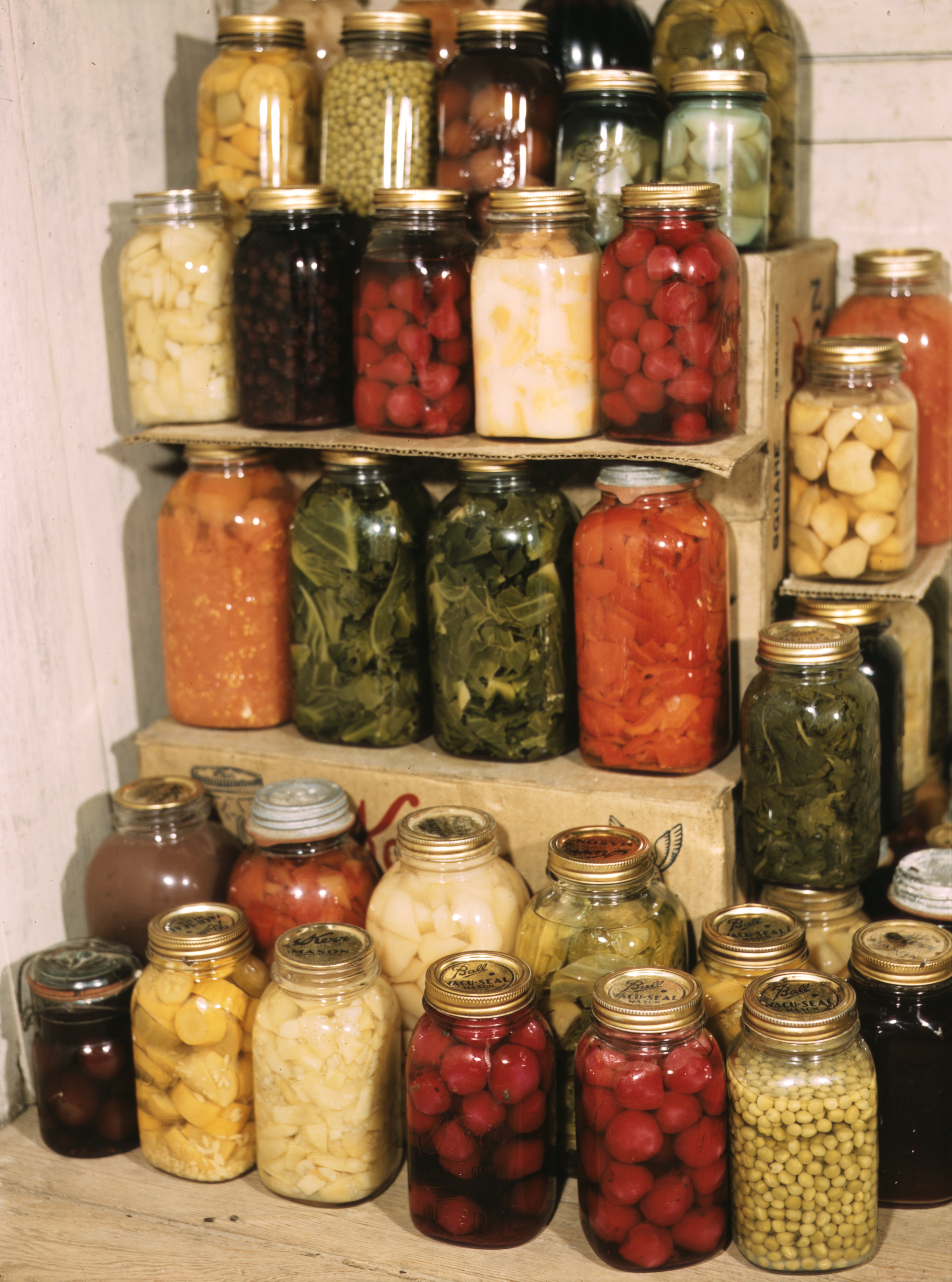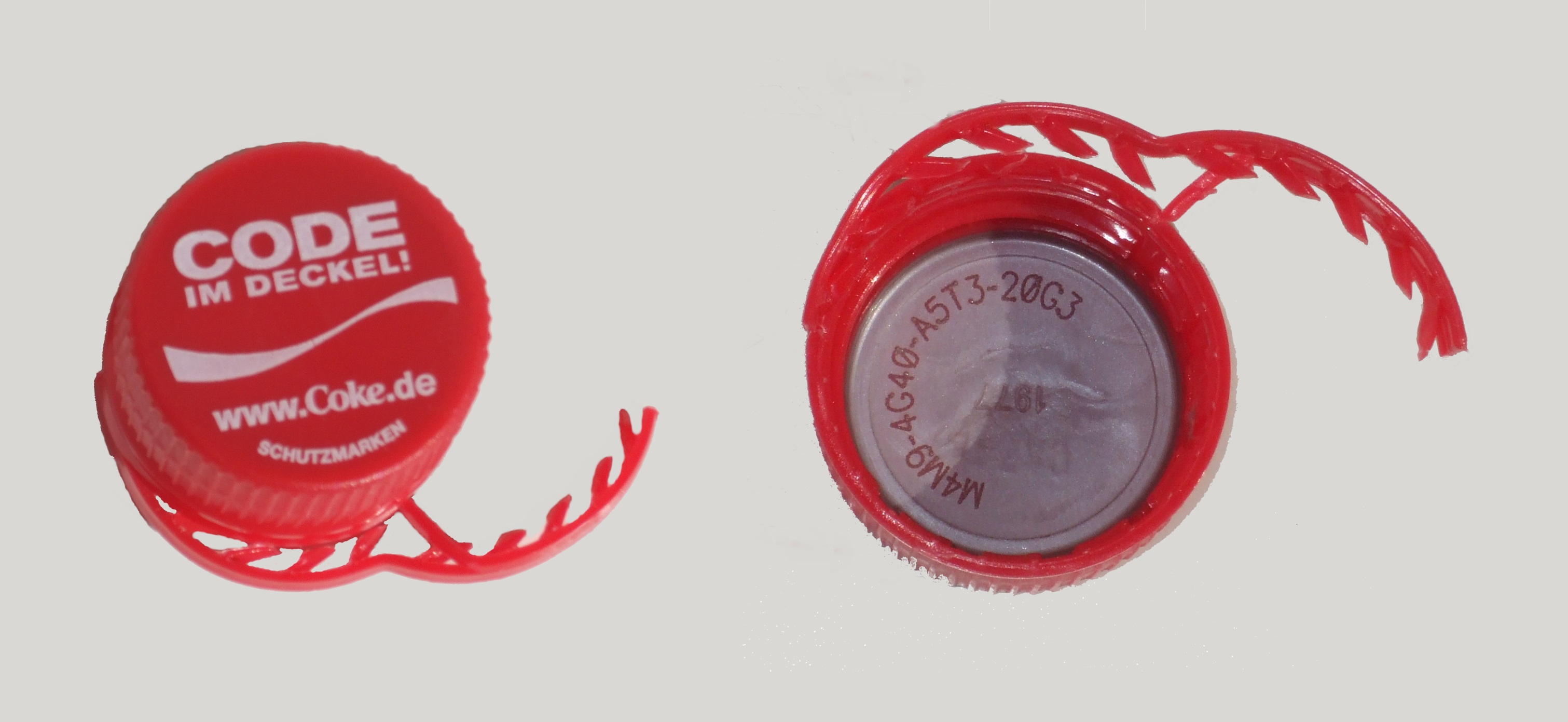|
Mason Jar
A Mason jar, also known as a canning jar, preserves jar or fruit jar, is a glass jar used in home canning to food preservation, preserve food. It was named after American tinsmith John Landis Mason, who patented it in 1858. The jar's mouth has a screw thread on its outer perimeter to accept a metal ring or "band". The band, when screwed down, presses a separate Stamping (metalworking), stamped steel disc-shaped lid (container), lid against the jar's rim. After Mason's patent expired, numerous other companies began manufacturing similar jars. Over the years, the Brand, brand name ''Mason'' became the Generic trademark, genericized trademark for that style of glass home canning jar, and the word "Mason" can be seen on many Ball Corporation, Ball and Kerr brand jars. The style of jar is occasionally referred to by common brand names such as Ball jar (in the eastern US) or Kerr jar (in the western US) even if the individual jar is not that brand. In early 20th-century United States, ... [...More Info...] [...Related Items...] OR: [Wikipedia] [Google] [Baidu] [Amazon] |
Kilner Jar
A Kilner jar is a rubber-sealed, glass jar used for preserving ( bottling) food. It was first produced in 1900 by John Kilner & Co., Yorkshire, England. History The Kilner Jar was originally invented by John Kilner (1792–1857) and associates, and manufactured by the Kilner glass bottlemakers company from Yorkshire, which he set up. The original Kilner bottlemakers operated from 1842, when the company was first founded, until 1937, when the company went into liquidation. In 2003, The Rayware Group purchased the Ravenhead name and continues to produce them today in China. Image:Kilner 1928 closed.jpg, A Kilner jar from no later than 1928 Image:Kilner 1928 open.jpg, The open jar Company names The various names of the Kilner companies were: * John Kilner and Co, Castleford, Yorkshire, 1842–1844 * John Kilner and Sons, Wakefield, Yorkshire, 1847–1857 * Kilner Brothers Glass Co, Thornhill Lees, Yorkshire, 1857–1873 also at Conisbrough, Yorkshire, 1863–1873 * Ki ... [...More Info...] [...Related Items...] OR: [Wikipedia] [Google] [Baidu] [Amazon] |
Fowler's Vacola
The Fowler's Vacola jar is a molded glass jar used in canning for food preservation. It is the most popular home canning system in Australia. History The system was developed in 1915 in Melbourne, Australia, by Joseph Fowler (28 February 1888 – 24 April 1972), who migrated from England in 1912, at his home in Hawthorn, Victoria, and became very popular. The jar The Fowler's Vacola system uses glass jars, single use rubber ring seals and pressed metal lids, much like American Mason jars first patented in 1858, except that the jars and lids are not threaded. During the canning process, while still hot (and presumably Sterilization (microbiology), sterile), the lids are secured by metal tension clips which are removed once cooled and a vacuum seal has formed. Other equipment marketed by the company included a large electrically heated waterbath and "sterilizing thermometer", a glass thermometer mounted on a concave stainless steel backing, graduated in both degrees Celsius and F ... [...More Info...] [...Related Items...] OR: [Wikipedia] [Google] [Baidu] [Amazon] |
Canning
Canning is a method of food preservation in which food is processed and sealed in an airtight container (jars like Mason jars, and steel and tin cans). Canning provides a shelf life that typically ranges from one to five years, although under specific circumstances, it can be much longer. A freeze-dried canned product, such as canned dried lentils, could last as long as 30 years in an edible state. In 1974, samples of canned food from the wreck of the ''Bertrand (steamboat), Bertrand'', a steamboat that sank in the Missouri River in 1865, were tested by the National Food Processors Association. Although appearance, smell, and vitamin content had deteriorated, there was no trace of microbial growth and the 109-year-old food was determined to be still safe to eat. History and development French origins Shortly before the Napoleonic Wars, the French government offered a hefty cash award of 12,000 francs to any inventor who could devise a cheap and effective method of preser ... [...More Info...] [...Related Items...] OR: [Wikipedia] [Google] [Baidu] [Amazon] |
Antique Mason Jars
An antique () is an item perceived as having value because of its aesthetic or historical significance, and often defined as at least 100 years old (or some other limit), although the term is often used loosely to describe any object that is old. An antique is usually an item that is collected or desirable because of its age, beauty, rarity, condition, utility, personal emotional connection and/or other unique features. It is an object that represents a previous era or time period in human history. Vintage and collectible are used to describe items that are old, but do not meet the 100-year criterion. Antiques are usually objects of the decorative arts that show some degree of craftsmanship, collectability, or an attention to design, such as a desk or an vintage car, early automobile. They are bought at antique shops, estate sales, auction houses, online auctions and other venues, or estate inherited. Antiques dealers often belong to national trade associations, many of wh ... [...More Info...] [...Related Items...] OR: [Wikipedia] [Google] [Baidu] [Amazon] |
Mason Jar Array
Mason may refer to: Occupations * Mason, brick mason, or bricklayer, a worker who lays bricks to assist in brickwork, or who lays any combination of stones, bricks, cinder blocks, or similar pieces * Stone mason, a craftsman in the stone-cutting and shaping industry Organizations * Mason (Freemasonry), a general term for a Freemason * George Mason University in Virginia, US ** Its athletic program, the George Mason Patriots People * Mason (given name) * Mason (surname), an English, French or Italian surname * Mason sept of Clan Sinclair * Mason (musician) (born 1980), Dutch electronic music producer, real name Iason Chronis Places * Mason, Illinois * Mason, Grant County, Kentucky * Mason, Magoffin County, Kentucky * Masons, Maryland * Mason, Michigan, in Ingham County * Mason, Houghton County, Michigan * Mason, Nevada * Mason, New Hampshire * Mason, Ohio * Mason, Oklahoma * Mason, South Dakota * Mason, Tennessee * Mason, Texas * Mason, West Virginia * Mason (town) ... [...More Info...] [...Related Items...] OR: [Wikipedia] [Google] [Baidu] [Amazon] |
Newell Brands
Newell Brands Inc. is an American manufacturer, marketer and distributor of consumer and commercial products. The company's brands and products include Rubbermaid storage/or waste disposal containers; home organization and reusable container products; Contigo and Bubba water bottles; Coleman outdoor products; writing instruments ( Berol, Expo Markers, Paper Mate, Dymo, Mr. Sketch, Parker Pens, Sharpie, Reynolds, Prismacolor, Rotring, X-acto, Waterman) glue ( Elmer's, Krazy Glue); children's products (Aprica, NUK, Tigex, Babysun, Baby Jogger and Graco); cookware and small appliances (Calphalon, Sunbeam, Rival, Crock-Pot; Holmes, FoodSaver, Oster, Osterizer, and Mr. Coffee) and fragrance products ( Yankee Candle, Chesapeake Bay Candle, Millefiori Milano, and WoodWick). The company's global headquarters is in Atlanta. History Newell Company The Newell Manufacturing Company was founded by Edgar Newell in Ogdensburg, New York, in 1903 as a manufactu ... [...More Info...] [...Related Items...] OR: [Wikipedia] [Google] [Baidu] [Amazon] |
Jarden
Jarden was an American consumer products company. Formed by the spin out of Ball Corporation's canning business, the company became a wider conglomerate of consumer brands, particularly in the outdoors and home appliances market. Jarden was acquired in 2016 by Newell Rubbermaid, which renamed itself Newell Brands. History In April 1993, Ball Corporation spun off its canning business as a new company called Alltrista Corporation. In May 2002, Alltrista changed its name to Jarden Corporation. The spin off retained the trademarks to the names Kerr, Ball, and Bernardin. In April 2002, Jarden Corporation acquired Tilia International, owner of the Foodsaver brand, for approximately $160 million. In February 2003, Jarden acquired the Diamond Match Company for approximately $108 million. In September 2003, Jarden acquired Lehigh Consumer Products Corporation for approximately $155 million, giving it ownership of the brands Crawford, Lehigh, and Leslie Locke. In March 2004, Jarde ... [...More Info...] [...Related Items...] OR: [Wikipedia] [Google] [Baidu] [Amazon] |
Society For Historical Archaeology
The Society for Historical Archaeology (SHA) is a professional organization of scholars concerned with the archaeology of the modern world (15th century-present). Founded in 1967, the SHA promotes scholarly research and the dissemination of knowledge pertaining to historical archaeology. The society is specifically interested in the identification, excavation, interpretation, and conservation of sites and materials on land and underwater. It is the largest such organization in the world and the third-largest anthropological organization in the United States. Mission According to its Constitution, :The Society for Historical Archaeology shall be an educational not-for-profit organization to promote scholarly research and the dissemination of knowledge concerning historical archaeology; to exchange information in this field; to hold periodic conferences to discuss problems of mutual interest relating to the study of historical archaeology; and to obtain the cooperation of the con ... [...More Info...] [...Related Items...] OR: [Wikipedia] [Google] [Baidu] [Amazon] |
Milk Glass
Milk glass is an opaque or translucent, milk white or colored glass that can be blown or pressed into a wide variety of shapes. First made in Venice in the 16th century, colors include blue, pink, yellow, brown, black, and white. Principle Milk glass contains dispersion particles with a refractive index significantly different from the glass matrix which scatters light by the Tyndall scattering effect. The size, distribution, and density of the particles controls the overall effect; which may range from mild opalization to opaque white. Some glasses are somewhat more blue from the side and somewhat red-orange in pass-through light. The particles are produced by the addition of opacifiers to the molten glass. Some opacifiers can be insoluble and are only dispersed in the melt. Others are added as precursors and react in the melt or dissolve in the molten glass and then precipitate as crystals upon cooling. This is similar to color production in striking glasses though the p ... [...More Info...] [...Related Items...] OR: [Wikipedia] [Google] [Baidu] [Amazon] |
Screw Cap
A screw cap or closure is a common type of closure for bottles, jars, and tubes. History Screw caps had been used in Europe since the 1500s and a British patent was filed in 1810 by Peter Durand acting on behalf of Nicolas Appert. John Landis Mason patented in 1858 a screw-on lid for a jar that became known as the Mason jar. Usage A screw closure is a mechanical device which is screwed on and off of a "finish" on a container. Either continuous threads or lugs are used. It must be engineered to be cost-effective, to provide an effective seal (and barrier), to be compatible with the contents, to be easily opened by the consumer, often to be reclosable, and to comply with product, package, and environmental laws and regulations. Manufacturers may ensure the integrity of a screw cap using a cap torque tester. Some closures need to be tamper resistant and have child-resistant packaging features. A tamper-evident band is a common tamper warning for screw caps of bottles ... [...More Info...] [...Related Items...] OR: [Wikipedia] [Google] [Baidu] [Amazon] |






